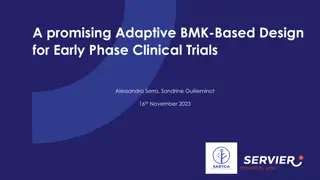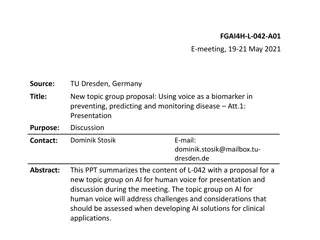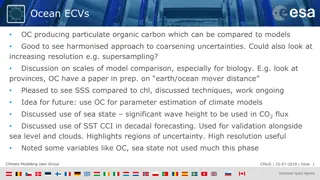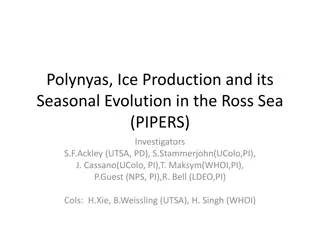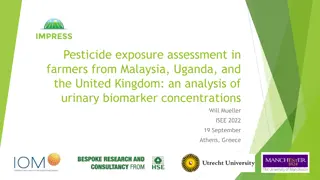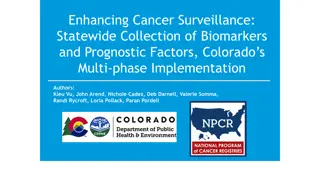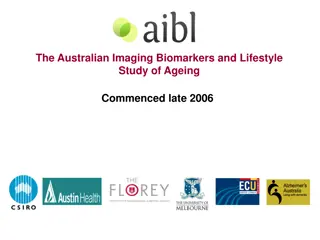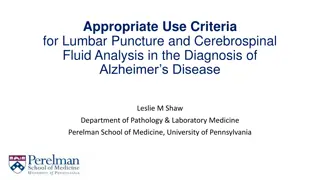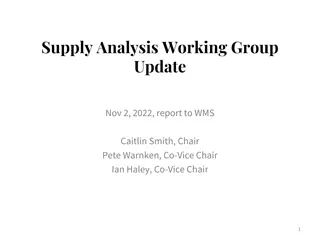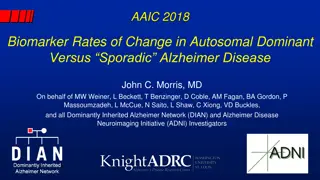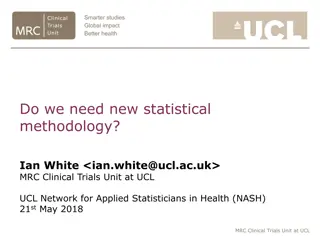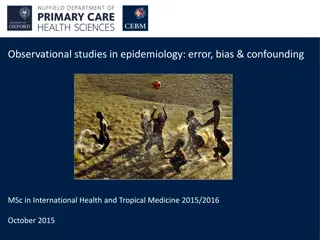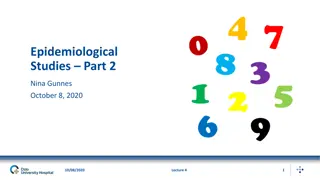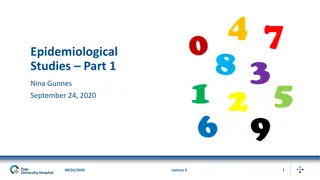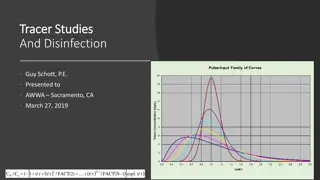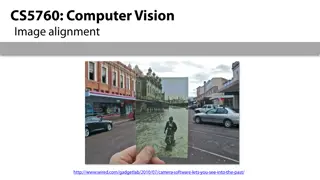Advanced Biomarker Analysis in Biogeochemistry Studies
In biogeochemistry research, advanced analytical techniques are utilized to isolate and separate organic matter, focusing on major carbon pools in bodies of water like Lake Superior. Biomarkers such as fatty acids and specific compounds are identified as indicators for various microbial processes, including aerobic methanotrophs, sulfate-reducing bacteria, archaea, and phytoplankton. These biomarkers help in understanding the biogeochemical processes occurring in aquatic ecosystems.
Download Presentation

Please find below an Image/Link to download the presentation.
The content on the website is provided AS IS for your information and personal use only. It may not be sold, licensed, or shared on other websites without obtaining consent from the author. Download presentation by click this link. If you encounter any issues during the download, it is possible that the publisher has removed the file from their server.
E N D
Presentation Transcript
Biogeochemistry II Introduction to biomarkers Prosper Zigah Woods Hole Oceanographic Institution pzigah@whoi.edu 1
Analytical techniques I: Isolation and separation of Organic Matter Organic matter Bulk DOM POM (0.7 m GF/F Filtrate) Init DOM Sinking POM (sediment trap) Suspended POM (0.7 m GF/F ) (0.2 m Gravity filtered) C18 XAD resins Ultrafiltration SPE extraction HMW DOM (>1k Da) LMW DOM (<1k Da)
Concentrations of major carbon pools in Lake Superior Biomarker analyses POM (susp & sink) [DIC] > [DOC] > [POC] by an order of magnitude Accelerated-solvent extracted (ASE) Total lipid extract (TLE) BulkPOC (mg/L) 0.0 0.1 0.2 0.3 0.4 0.5 0.6 0.7 0.8 Bond elute column chromatography 0 20 40 Neutrals Fatty acids Bound phospholipids Depth (m) 60 Alumina column chromatography 80 100 Apolar Polar Rest 120 FAMES (via methylation) GC 140 TMS (via sylation with BSTFA) GC Alcohols GC Stratified [POC] is higher than isothermal [POC] Well - mixed (May 08) Stratified (Aug 07) Stratified (Sept 08) Alkanes 4
Biomarker for aerobic methanotroph 13C( ) C18:1w7 Fatty acid (Oleic acid) -46 -44 -42 -40 -38 -36 -34 -32 -30 -28 0 20 40 60 Depth (m) 80 100 120 18:1w7 140 160 0 20 40 60 80 100 120 140 160 180 ng/L
Biomarker for sulfate reducing bacteria 13C( ) -50 -45 -40 -35 -30 -25 0 anteiso C15 Fatty acid (anteiso-Pentadecanoic acid) 20 40 60 Depth (m) 80 100 ng/L d13C 120 140 a-15:0 160 0 20 40 60 80 100 ng/L
Biomarker for archaea 13C - Archaeol ( ) -55 -50 -45 -40 -35 -30 -25 -20 0 Archaeol 2,3-Di-O-phytanyl-sn-glycerol 50 100 Depth (m) 150 200 Archeol 13C 250 0 2 4 6 8 10 Archaeol (ng/L)
Biomarker for phytoplankton 13C ( ) -45 -40 -35 -30 -25 -20 0 Phytol (3,7,11,15- tetramethyl-2- hexadecen-1-ol) 50 100 Depth (m) 150 Phytol 13C 200 250 0 200 400 600 800 1000 Phytol (ng/L)
Biomarker for dinoflagellates 13C ( ) -30 -28 -26 -24 -22 -20 -18 Dinosterol 0 (4 ,23,24-trimethyl-5 - cholest-22E-en-3 -ol) 50 100 Depth (m) 150 Dinosterol 13C 200 250 0 20 40 60 80 100 120 140 160 Dinosterol (ng/L)
Biomarker for larger organisms 13C ( ) -45 -40 -35 -30 -25 -20 -15 Cholesterol (3 )-cholest-5-en-3-ol) 0 50 100 Depth (m) 150 Cholesterol 13C 200 250 0 50 100 150 200 250 300 Cholesterol (ng/L)


